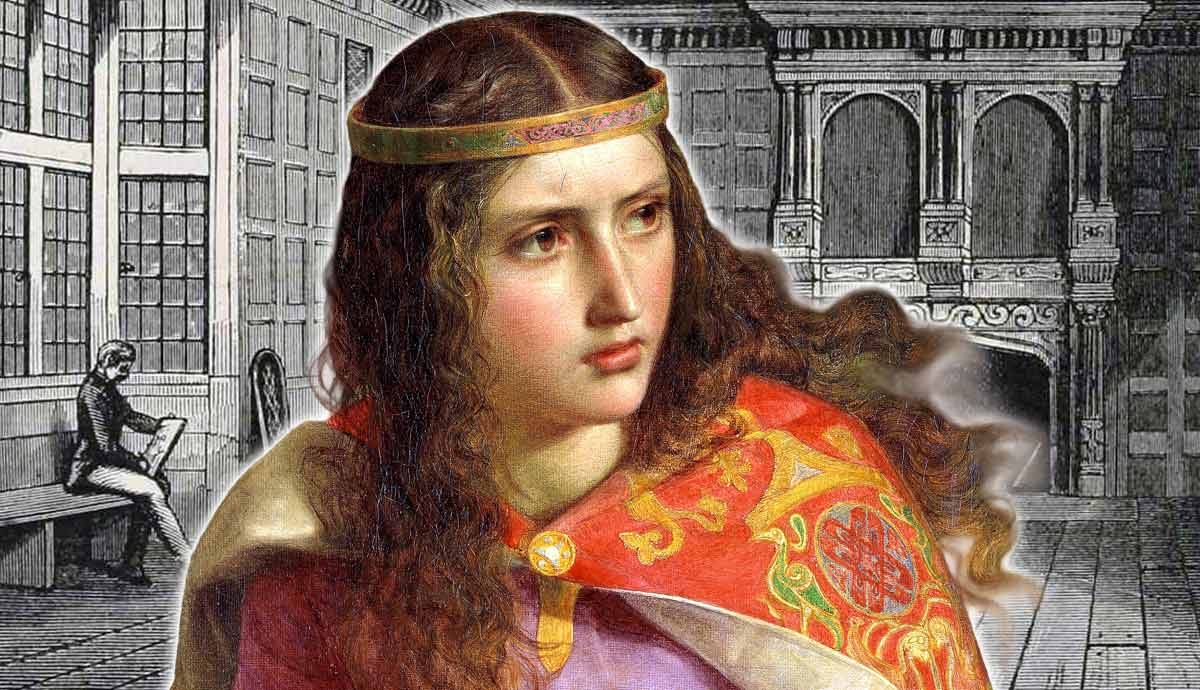How Did Eleanor of Aquitaine Become One of the Most Powerful Women of the Middle Ages?
Women during the Medieval Era often struggled with finding ways to exert power. But through her political connections, land holdings, and iron will, the legendary Eleanor of Aquitaine became a highly influential figure within the English court, and beyond.Eleanor of Aquitaine: BackgroundEngraving of Eleanor of Aquitaine, Source: ThoughtCoEleanor of Aquitaines father was William X The Saint, the Duke of Aquitaine and Gascony. This meant she was born into one of the wealthiest dynasties in Europe. Her mother was named Aenor. She was born in 1124 in Bordeaux, Aquitaine. Eleanor had three siblings, although her mother died when she was young. She was a well-documented beauty, with Anglo-Norman poet Philippe de Thaun writing, God save Lady Eleanor, Queen, who is the arbiter of honor, wit and beauty.Her father died in 1137, and as the eldest daughter, she inherited the duchy at the young age of 13. It was unusual for a woman to claim family inheritance at the time, but it made her a wealthy bride for a future husband, and gave her power that many women did not have in the Medieval era.Eleanor of Aquitaine. Source: Mary Evans Picture LibraryEleanor was also incredibly well educated, even in comparison with many of her male peers. It therefore did not take long before she was engaged, and then wed to Louis VII, the future King of France in 1137. His father sent him with almost 500 knights and officials to guarantee the marriage.How Eleanors Marriages Enhanced Her Political InfluenceEleanor of Aquitaine and Louis VII on Crusade, From Les Chroniques de Saint-Denis, 14th century. Source: BritannicaEleanors marriage to Louis VII was not a successful one. The contract of their marriage stated that Aquitaine would remain hers until their oldest son became King of France. Although they had two daughters, she was unable to have a male heir with him. In the interest of securing his family line, the King sought a divorce from her and their marriage was annulled in 1152. The fact that she retained Aquitaine as a personal asset meant that, even though previously married, she was still a good match, and young enough to have more children.God Speed by Edmund Blair Leighton, 1900. Source: SothebysWeeks after the annulment went through, Eleanor married Henry Plantagenet, the Duke of Normandy and Count of Anjou. He would later be King Henry II of England. Her marriage to him was more successful in terms of having heirs to the throne. Over the course of their marriage, they would have eight children. However, their marriage was also unhappy. The couple clashed over his infidelities and his feelings of threat over her position as a sovereign ruler on her own through Aquitaine. Her independence was fierce enough that it put a wedge in their marriage.When Eleanor Opposed Her HusbandDonor Portrait in Psalter of Eleanor of Aquitaine, ca. 1185. Source: The National Library of the Netherlands, The HagueThere is no better way to show nonsupport of your husbands rule than to actively encourage and participate in the rebellion of your sons against him. In 1173 she supported Henry, Richard, and Geoffrey in a revolt against Henry II after power clashes over her authority on Aquitaine, as well as brewing familial tensions. This was partly due to Henry II refusing to give their eldest surviving son Henry greater autonomy in the kingdom. Unfortunately for her, the rebellion failed. While not verified, it is possible that alliances were formed with France and Scotland to aid in the revolt. In true fairy-tale style, the king locked away his wife and she was imprisoned within the castle for about 15 years.After her husband died, she regained some leadership and political responsibilities through her son Richard I. While the incarceration set by her husband had meant to break her and put her in her place, instead, it helped build her resilience and her patience. The film The Lion in Winter, made in 1968 has Katharine Hepburn playing Eleanor during Christmas of 1183 during her imprisonment and illustrates the tense family relationships and politics at the time.How Eleanor Continued to Wield PowerEleanor of Aquitaine tomb effigy, photograph by Adam Bishop, 17 October 2011. Source: themedievalist.comAge did not slow down this powerhouse. In 1200, when she was almost 80, Eleanor rescued her granddaughter from Castile and brokered peace between the Plantagenets and Capetians through a marriage alliance. She also continued to aid her children politically.When she finally slowed down, Eleanor retired to Fontevraud Abbey. She died in 1204 either March 31, or April 1, depending on the sources. During her life she had ten children and 51 grandchildren, meaning that her family line would be ruling Europe for years. She is entombed in an abbey between Richard I and Henry II.King Louis VII Takes the Standard, by Jean-Baptiste Mauzaisse, 1840.Source: BritishHeritage.comOver more than eight decades, Eleanor demonstrated how intelligence, inheritance, bold alliances, and resilience could enable a medieval woman to push back the boundaries that existed in that time period for a woman. She inherited enormous wealth, married powerful men, acted as an administrator, and even rebelled against her husband when needed. Eleanor was not just a queen consort, but an enduring icon.


